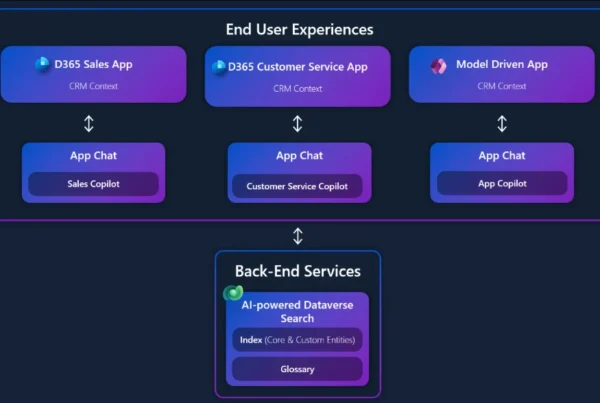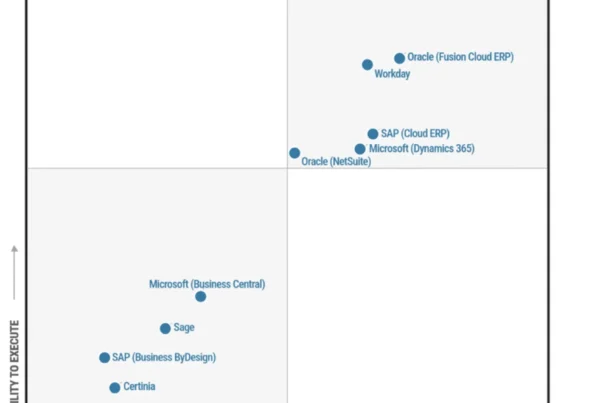
Frontier Firms put Copilot, agents, and agentic business applications at the core of their operating model to enrich employee experiences, reinvent customer engagement, reshape business processes, and bend the curve on innovation. Today, we’re announcing several new agentic capabilities to help customers move to the Frontier—read on to learn more.
Transforming sales with Sales Development Agent
Earlier in 2025, we introduced our vision for how AI agents will transform critical sales processes like building pipeline and qualifying leads. Today marks the next milestone in that journey with the Microsoft Sales Development Agent, available through the Frontier Program in December 2025. Many sales organizations are under pressure to deliver more revenue with limited resources, and the Sales Development Agent helps sales teams scale their impact. This allows sellers to focus on nurturing customer relationships and closing deals.
Features include:
- Revenue and pipeline growth: The agent continuously researches prospects, crafts personalized outreach, and automatically follows up to ensure no lead is left behind.
- Scalability: Fully independent, yet collaborative, the agent acts as a teammate, with the ability to hand off leads to human sellers when needed.
- Security and governance: Built on Microsoft’s trusted security and compliance foundation and when enabled with Agent 365, the agent adheres to robust policies and access controls to ensure user data and workflows are protected.
Sales Development Agent connects with leading CRM systems like Salesforce and Microsoft Dynamics 365, and the Microsoft 365 apps your teams already use like Microsoft Outlook and Microsoft Teams.
The Microsoft sales team is among the first to use Sales Development Agent to reinvent the sales engagement process. With the use of Sales Development Agent, there was a 15.1% increase in the lead-to-opportunity conversation rate. 1
Sales leaders want to help sellers act on more leads, reach more customers, grow faster, and improve revenue per seller. Microsoft Sales Development Agent can make that possible by creating an infinitely scalable sales organization, so no lead is left behind. Accenture plans to pilot Sales Development Agent across our global inside sales-as-a-service business—which helps clients sell to customers around the world—to boost their reach and revenue while maintaining cost to serve. We’ll use what we learn to help clients leverage Sales Development Agent, scale their teams, and unlock new growth.
—Chris Hergesell, Sales Reinvention Lead, Accenture Song
From System of Record to System of Action
In October 2025, we shared our vision for agentic business applications—built on agents, Copilot, and unified data. These components are what define Dynamics 365 as a system of action.
Today, we’re taking that vision further with updates to Model Context Protocol (MCP) servers across Dynamics 365 and Microsoft Power Platform, strengthening the foundation for agentic capabilities across your entire business. MCP servers are configurable bridges between the business data within your line-of-business (LOB) apps, and the agents you build using tools like Microsoft Copilot Studio. It serves as a universal intermediary, unlocking a unified platform agnostic access to app data, modernizing how AI agents are interoperable with your apps.
For customers of Dynamics 365 Sales and Customer Service, we’ve used MCP to simplify integration between agents in Dynamics 365 and the platforms used by sellers and service reps to execute complementary workflows, like lead research, engagement, and qualification, as well as case management and case resolution, available in public preview on November 21, 2025.
For customers of Dynamics 365 ERP, we are announcing the public preview of the MCP server that unlocks hundreds of thousands of ERP functions for real-time use. We are also introducing a new analytics MCP server in public preview starting in December 2025. These two servers provide a secure, standardized foundation to connect ERP data with AI-powered analytics, helping customers make faster, more accurate decisions and innovate without sacrificing governance.
We are also announcing the Power Apps MCP server in public preview that enables agents to seamlessly trigger app capabilities such as approvals, form submissions, and data retrieval. This makes every Power App a composable, reusable building block in your organization’s AI ecosystem empowering both citizen and professional developers to expose app functionality to agents with confidence and control.
Lastly, the Dataverse MCP server, now generally available, allows people to benefit from natural language interactions, receiving real-time answers grounded in Dataverse data, while makers and admins gain powerful, built-in tools for data operations, search, and prompt execution.
We see tremendous excitement from customers and partners for agentic Dynamics 365 applications. Take Ramp, a financial operations platform designed to save companies time and money. Ramp built an agentic solution, currently in preview, using Microsoft Foundry that integrates with Dynamics 365 Business Central and Teams to streamline employee expense management.
Join the movement to the Frontier with Copilot, agents, and agentic business applications
We know that moving to the Frontier isn’t just about technology. That’s why we’re partnering with Harvard Business School to collaborate on research and executive education to help you put this into practice at your own company. We’re also sharing new resources for leaders on their journey to the Frontier Firm with Frontier Function Guides for Sales, HR, and IT and a look inside our learnings at Microsoft–including three ways to turn insight into action. We’re committed to helping you transform—we’ll see you at the Frontier!
If you’re interested in learning more:
1 Internal Microsoft sales team data based on time period January 1 to November 7, 2025. Total customers outreach by the agent: 61,734. Lead-to-opportunity ratio (sales qualification): 15.1%.






